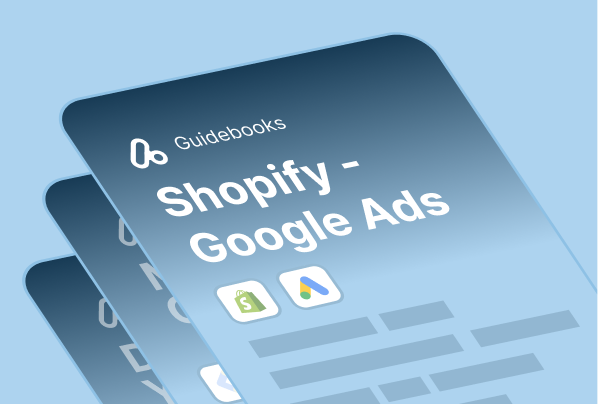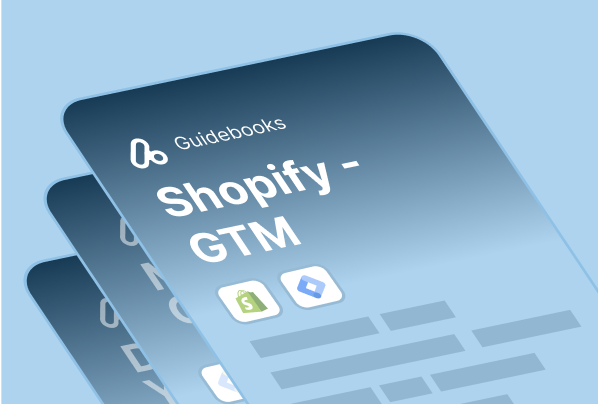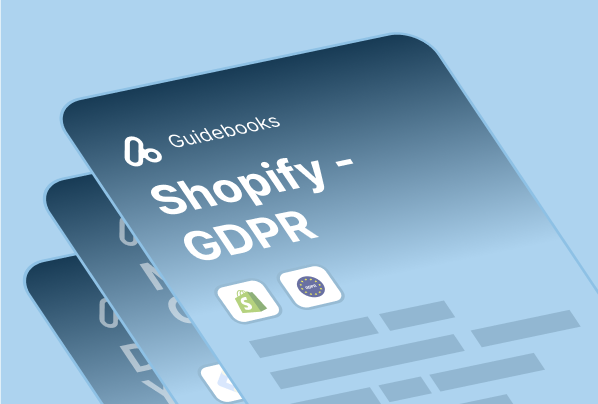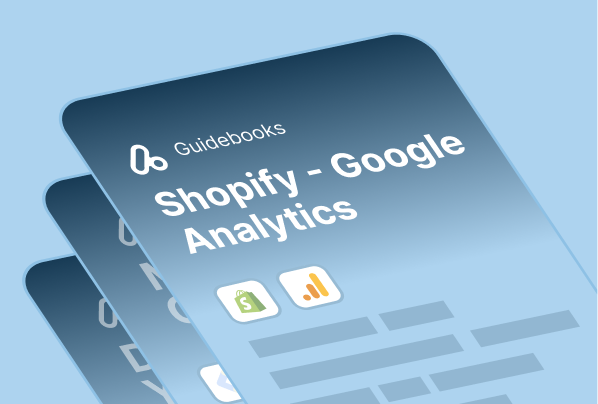As browser restrictions tighten and third-party cookies lose reliability, first-party data has become essential for any merchant who wants consistent attribution and better ad performance.
What Is First-Party Data?
First-party data refers to information collected directly between your store and your customer. That includes emails, phone numbers, purchases, UTM parameters, and any interaction that happens on your site.
Unlike third-party data — which relies on external platforms or cookies — first-party data is collected and stored by you, using your domain and tools.
It is more privacy-compliant and more durable because it doesn’t depend on cross-site cookies or external tracking pixels.
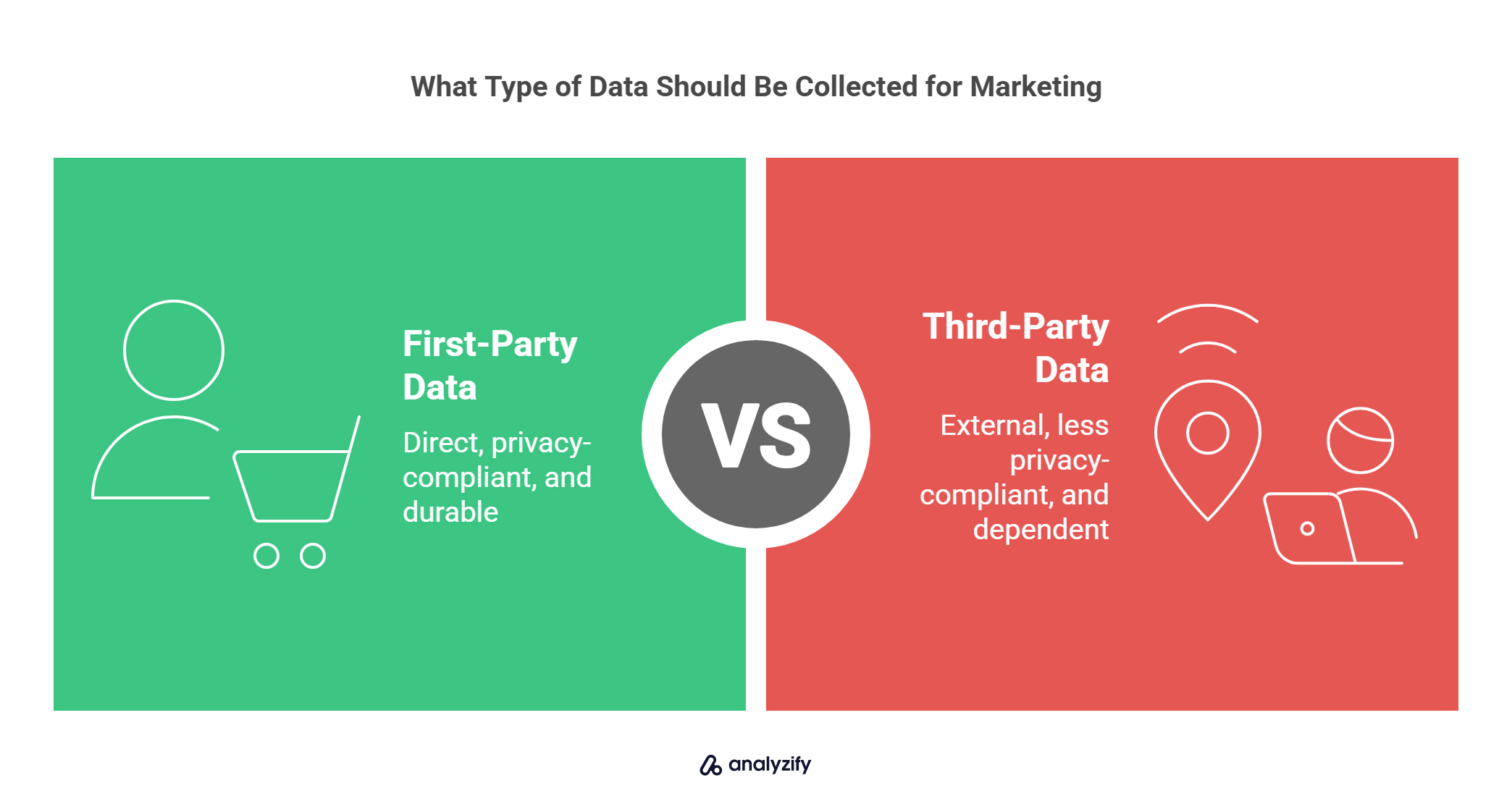
✅ For example, if a user clicks on a Meta ad and arrives at your store with UTM parameters, and those UTMs are stored in Shopify (e.g., in the cart or order), they become part of your first-party data. You can then re-use this data across Meta, GA4, TikTok, or even in your email platforms.
Why First-Party Data Is Becoming Non-Negotiable
Recent shifts in tracking methods and data privacy laws have made first-party data essential for accurate attribution today:
Ad blockers and iOS privacy settings now regularly block third-party scripts like Meta Pixel or GA4 tags.
Short-lived cookies and cross-site tracking limitations (especially in Safari) break session continuity and make attribution unreliable.
GDPR and privacy regulations require transparent, user-consented data collection — which is easier to manage with first-party storage under your own domain.
That’s why storing attribution data — like UTMs, traffic sources, session info — in your own systems (Shopify metafields, cart notes, or customer tags) has become critical.
First-party data is now the most reliable source of truth for your marketing performance.
How It Powers Better Attribution and Optimization
By storing key tracking data yourself, you reduce your dependence on external tools — and increase your ability to match and attribute events across sessions, platforms, and even devices.
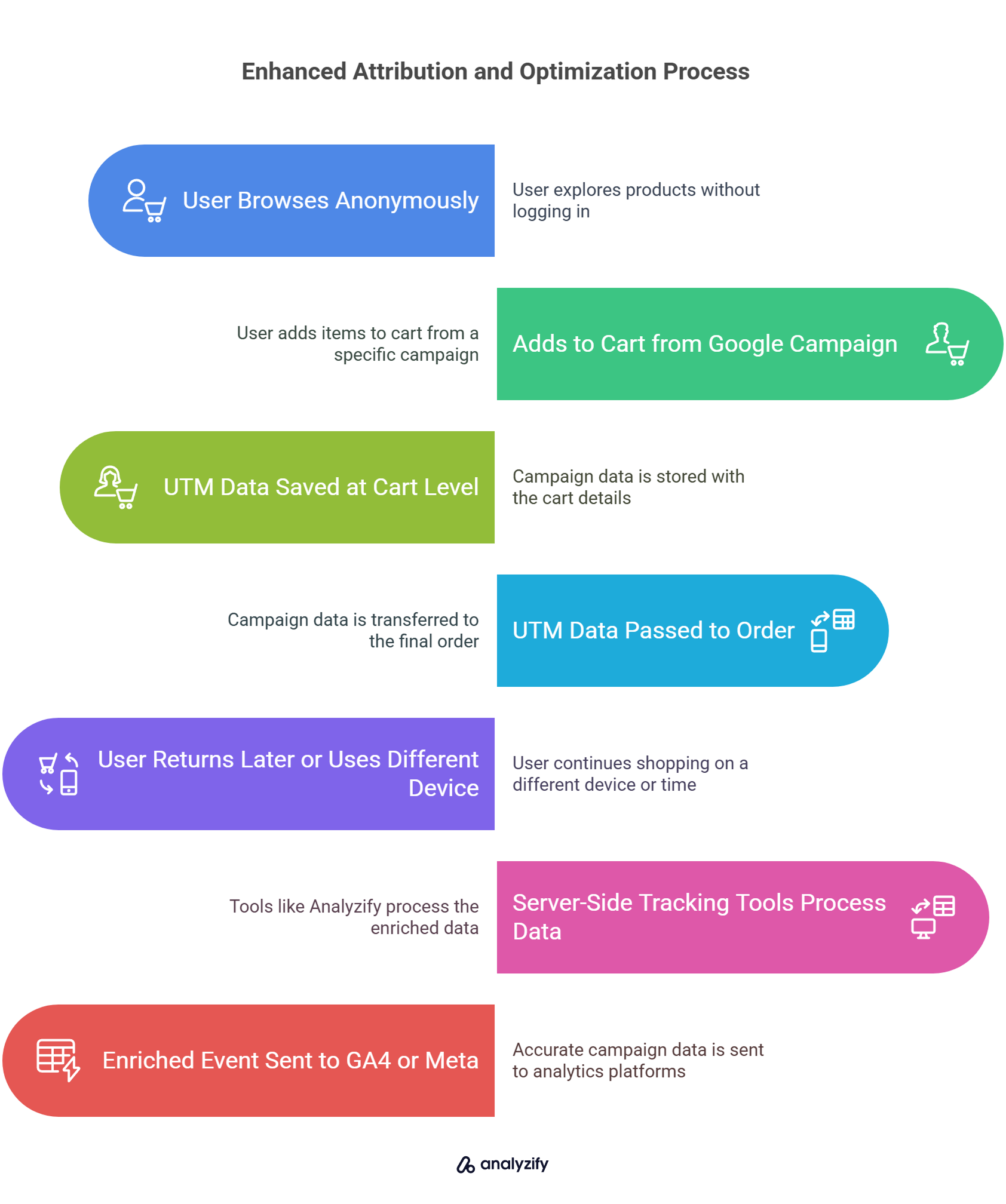
Here’s what that looks like in practice:
If a user browses anonymously and adds to cart from a Google campaign, the UTM data can be saved at the cart level.
That same UTM data can be passed into the final order — even if the user returns hours later or finishes the purchase on a different device.
Server-side tracking tools (like Analyzify) can then send this enriched event to GA4 or Meta with accurate, campaign-aware data — even if the browser didn’t fire a pixel.
✅ This improves:
Attribution accuracy for purchases and conversions
Event Match Quality in platforms like Meta and TikTok
Audience segmentation in tools like Klaviyo or Google Ads
Where Shopify Stores First-Party Data: Cart, Order, and Customer Layers
First-party data is only valuable if it’s captured and stored properly. Shopify offers multiple layers where attribution and session-level data can live — but each layer behaves differently.
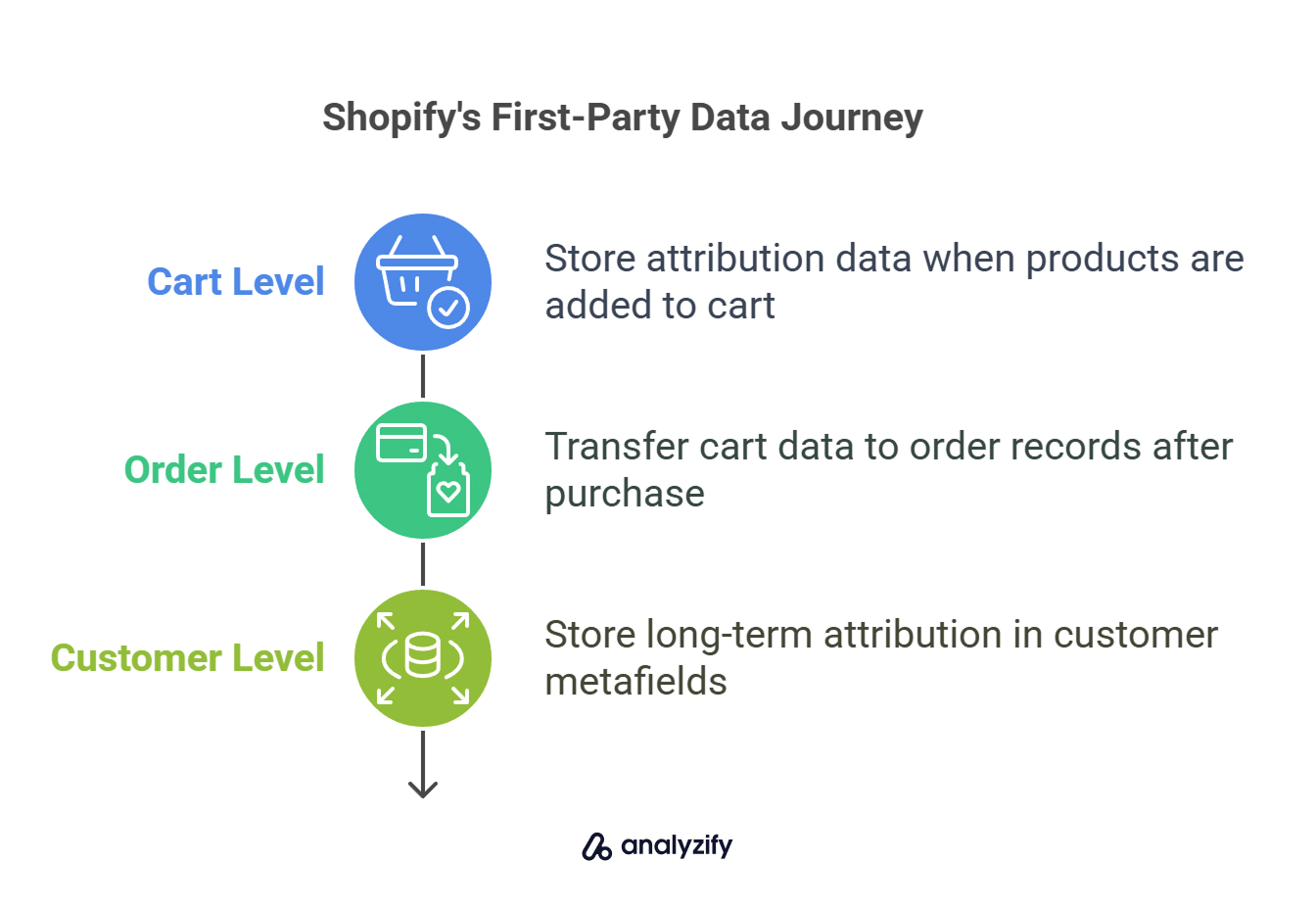
1. Cart-Level Data: Where Attribution Begins
A Shopify cart is created as soon as someone adds a product — and this is your first real chance to attach attribution.
At this stage, Analyzify can store UTM parameters, referrer, fbclid, and GA4 client IDs into the cart using custom logic.
This information is often written into cart attributes or cart notes, which Shopify retains as the user proceeds to checkout.
Even if the purchase happens hours later — or on another device — that cart data can persist and help enrich the final conversion event.
Cart data is especially useful for anonymous users, since it doesn’t require account creation or login to store attribution.
2. Order-Level Data: The Reliable Anchor
Once a purchase is completed, cart-level data can be passed into the final order.
Shopify allows you to store attribution at the order level using metafields, order tags, or inherited cart notes.
This data is more durable and ideal for enriching server-side purchase events in Meta, GA4, or TikTok.
For example:
If UTM source and campaign were stored in the cart, they’ll be carried into the order.
Analyzify reads this and passes it as event parameters when sending purchase data through the server.
This ensures that your server-side purchase event is tied to the correct campaign — even if the client-side pixel failed or consent was denied at the browser level.
3. Customer-Level Data: Long-Term Attribution
Shopify’s customer object provides an opportunity to maintain attribution beyond a single session or order.
First-party data can be stored in customer metafields or tags, including:
Original acquisition source
First UTM campaign
Most recent traffic source
This enables long-term visibility across multiple visits and purchases — and is especially useful for high-LTV customers.
Even without a login, attribution can be stitched together based on email, phone, or cookies stored earlier in the user’s journey.
For merchants using platforms like Klaviyo, this level of detail supports audience building, lifecycle segmentation, and personalized retargeting.
Final Note: Why Shopify’s Built-In Attribution Isn’t Enough
Shopify does offer native attribution tools — but they often fail to capture detailed tracking data.
For example, many merchants notice that Shopify’s default attribution view shows “blank” UTM fields — especially when cookies are blocked or pages are skipped.
That’s why tools like Analyzify proactively write attribution data into the cart, order, and customer layers — ensuring that no matter where the client-side tracking fails, you still own the data.
How UTM Parameters Become First-Party Data in Shopify
UTM parameters are essential for understanding where your traffic comes from — but by default, Shopify doesn’t store them beyond the session. Once the user navigates or returns later, that data is usually gone.
1. The Problem: Shopify Doesn’t Store UTMs by Default
When a user clicks an ad (e.g. Facebook or Google), UTM parameters are attached to the URL:
?utm_source=facebook&utm_medium=cpc&utm_campaign=spring_sale
But unless this data is captured and stored manually:
It disappears as soon as the session ends
It’s not included in Shopify’s default order data
It can’t be used for post-purchase attribution or enrichment
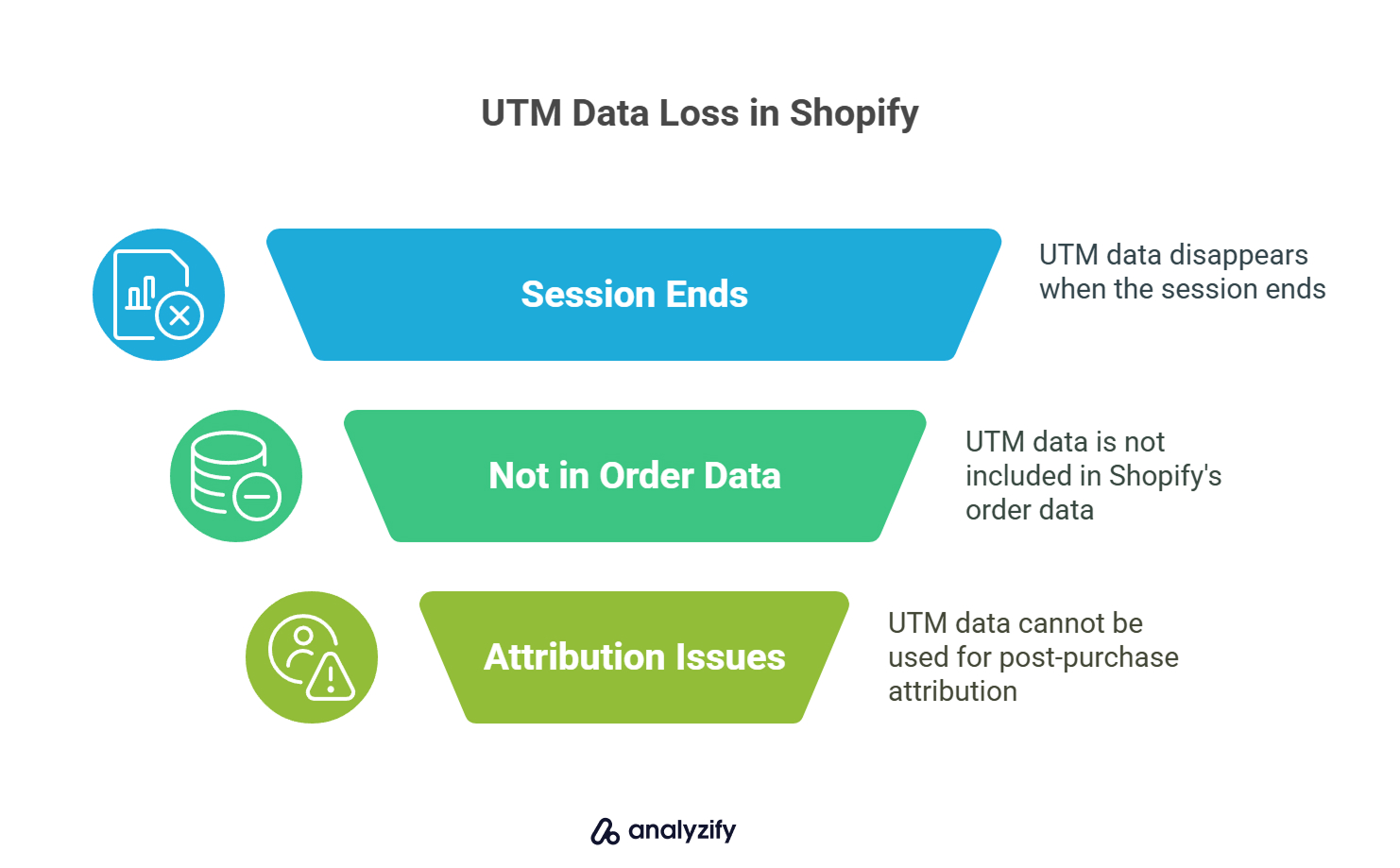
✅ This is why many Shopify stores see “Direct / None” in GA4 or blank UTM fields in Shopify analytics.
2. How to Turn UTMs Into First-Party Data
To make UTMs persistent and useful, they need to be written into Shopify — ideally at the cart, order, or customer level.
Analyzify does this using frontend scripts and Shopify’s native storage layers:
UTM parameters are read from the landing URL
The data is stored in cart attributes or notes (when the user adds an item)
That data is then carried over into the order and optionally added to customer records
This makes the attribution data durable and reusable — stored directly by your store and usable across platforms, even if browser sessions expire.
3. Why It Matters for Attribution Accuracy
This UTM storage process creates a more reliable attribution path:
When the purchase happens, even hours later or from a different session, the UTMs are still present in the order
Analyzify reads those values and includes them in server-side purchase events sent to Meta, TikTok, and GA4
Platforms receive better context and match the conversion back to the correct campaign
Even when cookies are blocked or the session has expired, this approach preserves attribution clarity.
Using First-Party Data to Enrich Server-Side Events
First-party data becomes truly powerful when it’s used not just for storage — but to actively enrich your conversion events.
Enriching events with stored Shopify data improves match quality, attribution clarity, and campaign performance when sending data to Meta via Conversions API, GA4 via Measurement Protocol, or TikTok via Events API.
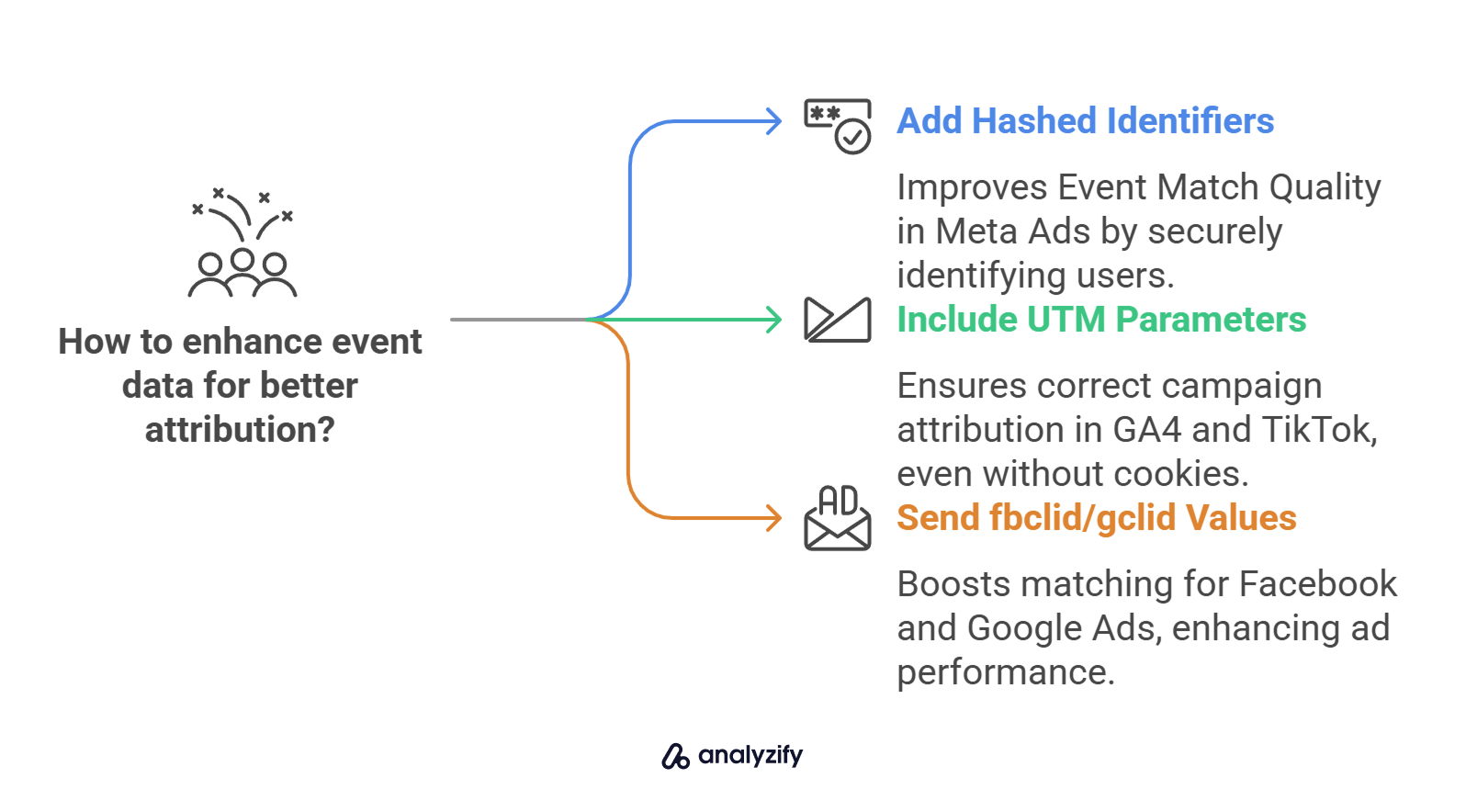
1. What Does “Event Enrichment” Mean?
Event enrichment means attaching key values — like UTMs, click IDs, or user identifiers — to conversion events so that platforms can correctly match and attribute them. These values are especially important when browser-based tracking is blocked or inconsistent.
2. Where Does This Data Come From in Shopify?
As explained earlier, Shopify doesn’t persist key attribution data by default — which is why enrichment relies on stored values from earlier steps. Instead, the key information is often gathered at earlier steps and stored by Analyzify in Shopify fields:
Cart notes or cart attributes — for UTM parameters and referrer
Order metafields or tags — for campaign source, click IDs, or external IDs
Customer metafields — for long-term IDs like acquisition source or lifetime value segmentation
This stored data becomes part of your first-party architecture, meaning it’s reliable and under your control — not lost to browser conditions.
3. How Analyzify Uses Stored Data to Enrich Events
When it’s time to send a server-side event — like a purchase — Analyzify dynamically pulls available first-party data using a layered logic model.
It starts by checking for fresh data from the browser (if consent is granted and tracking is active). If that’s unavailable, it falls back to data stored in Shopify — such as cart attributes, order metafields, or customer tags. And when neither is present, Analyzify uses fallbacks like internal referrer data or page context.
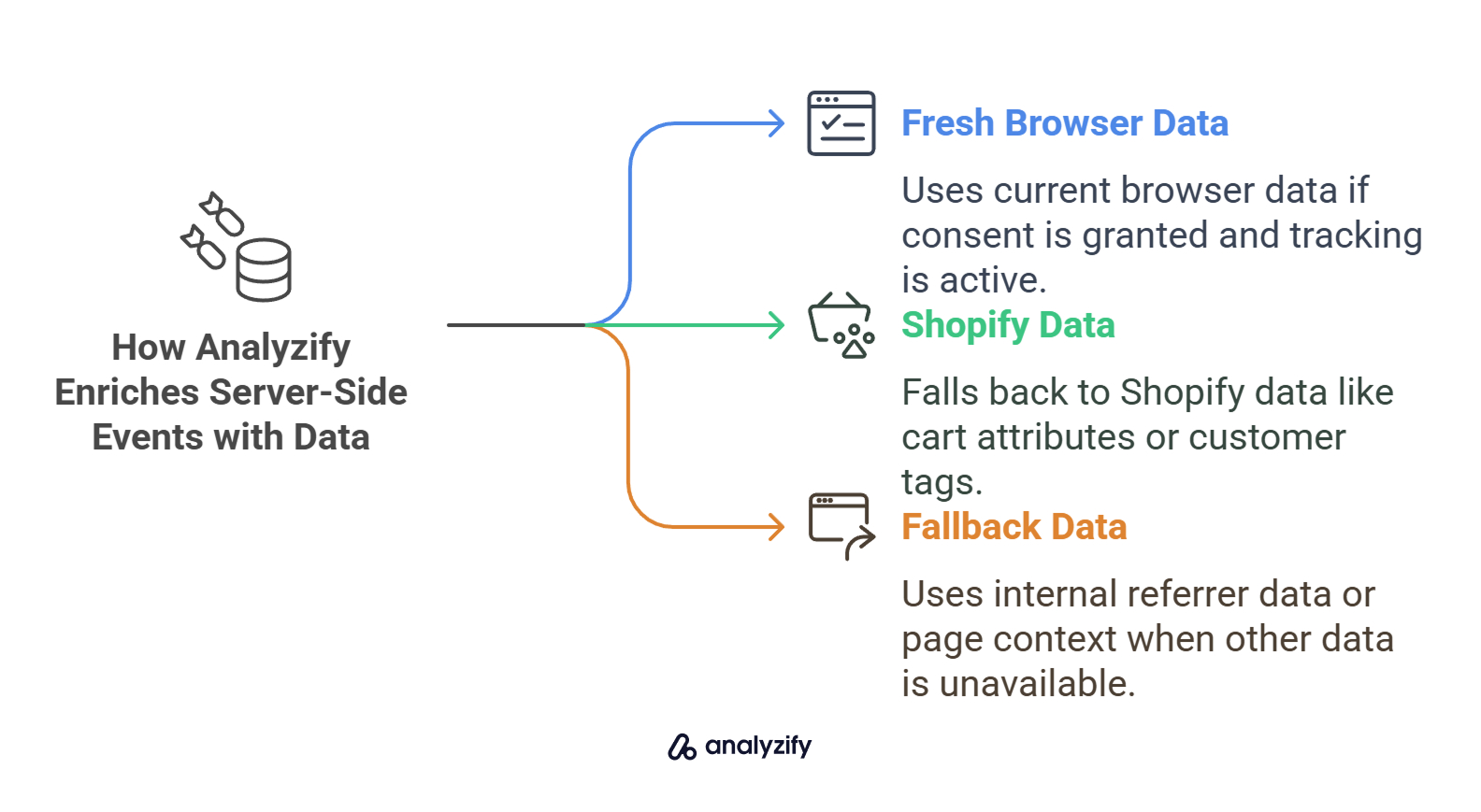
This tiered approach ensures events are sent with the highest-quality data possible, even in non-ideal conditions.
✅ As a result:
Events respect user consent and privacy logic
Match rates improve significantly on Meta and TikTok
GA4 reports show fewer unattributed conversions like “direct/none”
Let’s break that down with a real example.
Suppose a user clicked a Facebook ad, added a product to cart, and returned hours later to complete the purchase. Even if the pixel didn’t fire on the thank_you page, the server-side event can still be enriched with:
utm_source=facebook — previously saved in the cart note
email_hash — retrieved from the customer object
fbclid — stored at the order level during checkout
These values are sent along with the event, giving ad platforms the context they need to match the conversion to the correct campaign.
4. Platforms That Benefit from Enrichment
These enriched events directly improve how platforms attribute and act on conversions — boosting match rates, preserving campaign data, and helping tools like Meta, GA4, TikTok, and email platforms deliver better optimization and reporting outcomes.
Enriched server-side events help all platforms do their job better — not just for tracking, but for actual ad delivery and ROI.
Cross-Session Attribution — Connecting the Dots with First-Party Data
Most customer journeys don’t end in a single visit. A user may discover a product via Instagram, browse your site, come back via Google, and only purchase days later via email.
Without a strong first-party strategy, you lose track of that journey — and misattribute the sale.
1. The Challenge: Attribution Breaks Between Visits
Attribution systems like GA4, Meta, and TikTok are often session-dependent — meaning they rely on data from a single browser session to assign credit for a conversion.
When a user:
Closes the browser or switches devices
Clears cookies or blocks tracking scripts
Visits through Safari or private mode
Doesn’t log in or complete checkout immediately
…the attribution connection is lost. These conditions are increasingly common, especially on mobile.
The result?

❌ GA4 may classify the conversion as “Direct / None”, breaking campaign reporting
❌ Meta loses key identifiers, lowering Event Match Quality (EMQ) and hurting ROAS
❌ Email platforms like Klaviyo or Omnisend can’t connect the sale back to the original ad click
This means your campaigns may have performed well — but your tracking won’t reflect that unless you have persistent, first-party attribution in place.
2. How First-Party Data Bridges the Gaps
With the right setup, you can persist attribution data across sessions. Here’s how Shopify layers help:
Cart-level UTM and referrer data remains even if the user closes the tab or returns later
Order-level tags/metafields keep a record of campaign sources tied to specific purchases
Customer-level records store original source and update with the latest campaign interaction
This works even if the user is anonymous. The cart is created on product add-to-cart, and data is written there using cookies, referral URLs, and landing page logic.
Later, if the user completes their purchase on a different device but uses the same email, the order can still be matched to their original source using enriched first-party data.
3. Example Flow: Multi-Touch Attribution with Persistence
Let’s walk through a common scenario:
A user clicks a TikTok ad, browses your store, and adds to cart
→ UTM + TikTok click ID (ttclid) is saved to cart attributesTwo days later, they return via an organic search and complete the purchase
→ The cart persists, and the original campaign data is carried into the orderAnalyzify reads this stored data during the purchase event
→ TikTok receives a server-side event with the correct campaign attribution
In this case, attribution is preserved even without cookies, logins, or third-party pixels.
4. Why This Matters for Performance and Privacy
Cross-session attribution strengthens long-term campaign performance by keeping the source data intact — even across devices.
It improves signal continuity in ad platforms, even when cookies are lost
It powers smarter email segmentation and remarketing workflows
It prevents conversion misattribution (like “Direct / None”) in reporting tools































